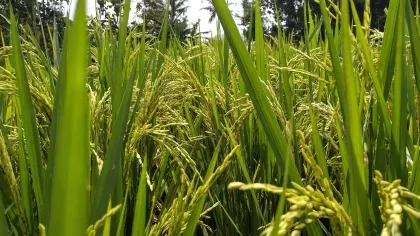28 July 2017
Putting bamboo and rattan on the map
This week, Kew launches a World Checklist and Atlas for Rattans and Bamboos. In this post, we explain Kew's involvement in these much needed books.

Why has Kew helped to produce these books?
Bamboos and rattans are economically important plants. With an estimated 31.5 million hectares grown worldwide (the size of the UK and Ireland combined) and an annual trade value of over 60 billion USD, they employ tens of millions of people across the tropical and subtropical South. However they are very difficult to identify and name correctly.
Being able to identify and name species is important, not just for plant taxonomists but also for anyone involved in trade to ensure that it is sustainable – from farmers and processers to even those involved in manufacturing the range of products produced from these plants.
In response to this need, the International Bamboo and Rattan Organisation (INBAR) and Royal Botanic Gardens, Kew have compiled a comprehensive list of species and published a World Checklist and Atlas of Bamboos and Rattans. Incredibly, the Checklist identifies 1,642 bamboo species and 631 rattan species, each with remarkably different characteristics.
How were the books put together?
Co-author and Kew scientist Rafaël Govaerts first scanned all scientific literature on bamboos and rattans received by Kew's library and combined this information with Kew plant name databases including the International Plant Names Index, Palm Web and GrassBase. Then Kew’s bamboo and rattan experts, including Bat Vorontsova, Bill Baker and John Dransfield, checked and updated the data, alongside Lynn Clark (Iowa State University). We then asked a number of specialist taxonomic reviewers to carry out further checks and make suggestions that were incorporated into the final Checklist and Atlas.
How can these books be used?
Everyone working with bamboos and rattans will now be able to find the correct plant name quickly and easily, and confirm where the plants grow.
In the past, different people used different research papers and literature resources, leading to several names being used for a single species.
The use of DNA sequence data has recently enabled an improved understanding of how plants are related to one another, and this information is being used to update the classification system. Changes to the classification system have been brought together in this checklist for the first time. Using the new Checklist and Atlas, one correct scientific name will be used for each species. Sounds easy – but actually this is tricky in practice and why expert scientific knowledge is so important.
Another vital way that the information in the Checklist and Atlas is useful is that it captures the diversity of bamboo and rattan species that exist. The vast majority of these species were previouly simply not known. Now more species can be researched.
References
The World Checklist and Atlas will be launched on 1 August at Kew Gardens. Further information can be found via INBAR.
Both publications are available online (PDF), to allow everyone to have access to the most recent scientific information:
Vorontsova, M.S., Clark, L.G., Dransfield, J., Govaerts, R., Baker, W.J. (2016). World Checklist of Bamboos and Rattans. International Network of Bamboo and Rattan & Royal Botanic Gardens, Kew. 454 pages. Available online
Vorontsova, M.S., Clark, L.G., Dransfield, J., Govaerts, R., Wilkinson, T., Baker, W.J. (2016). World Atlas of Bamboos and Rattans. International Network of Bamboo and Rattan & Royal Botanic Gardens, Kew. 819 pages. Available online

.png.webp?itok=fy47fI7-)



